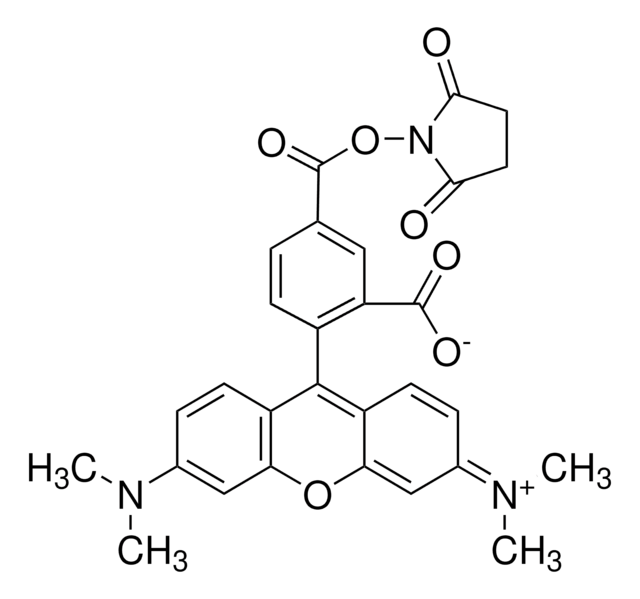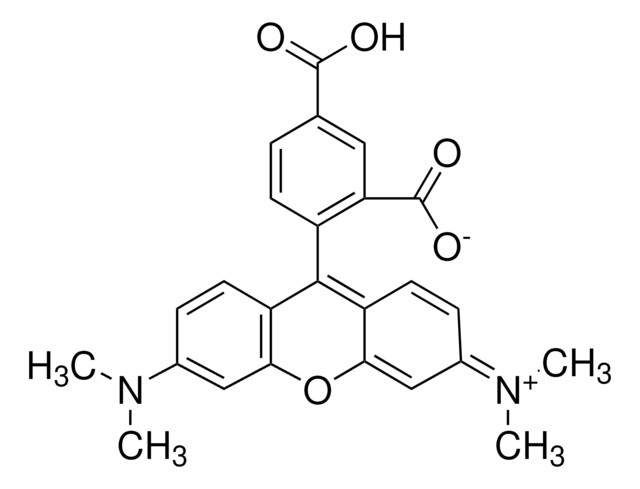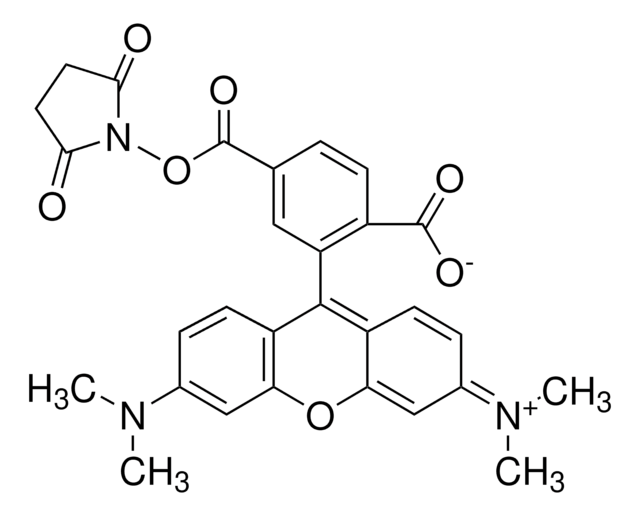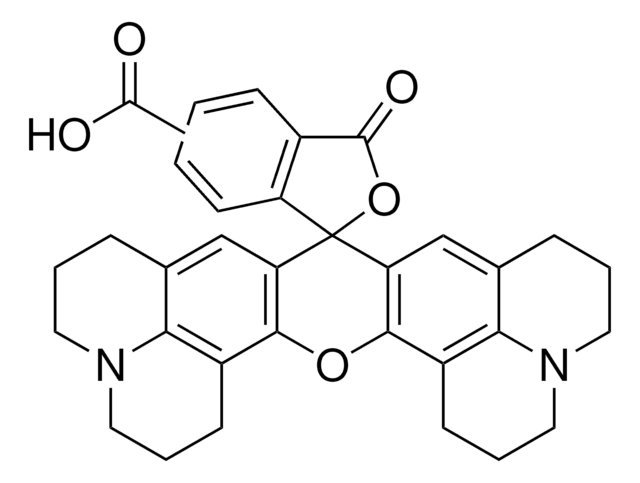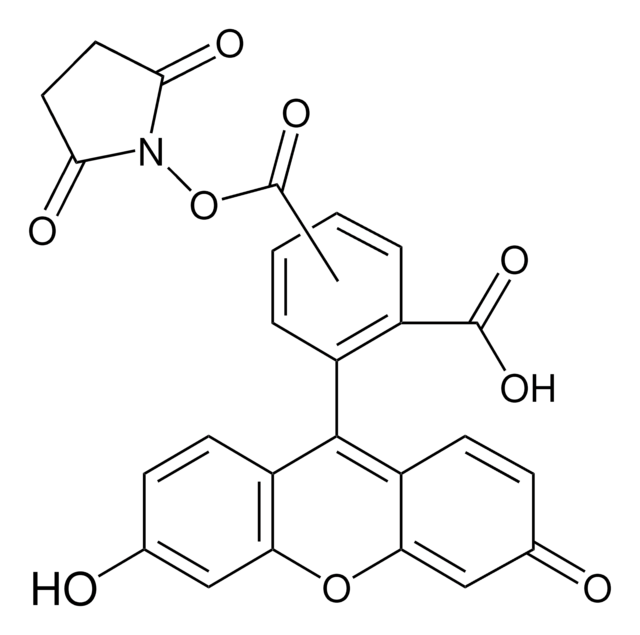21955
5(6)-Carboxytetramethylrhodamin-N-succinimidylester
BioReagent, suitable for fluorescence, ≥70% (coupling to amines)
About This Item
Empfohlene Produkte
Produktlinie
BioReagent
Assay
≥70% (coupling to amines)
Form
powder
Löslichkeit
DMF: soluble
acetonitrile: soluble
methanol: soluble
Fluoreszenz
λex 543 nm; λem 576 nm in methanol
λex 554 nm; λem 584 nm in 0.1 M phosphate pH 8.0
Eignung
suitable for fluorescence
Lagertemp.
−20°C
SMILES String
CN(C)c1ccc2c(Oc3cc(ccc3C24OC(=O)c5cc(ccc45)C(=O)ON6C(=O)CCC6=O)N(C)C)c1
InChI
1S/C29H25N3O7/c1-30(2)17-6-9-21-23(14-17)37-24-15-18(31(3)4)7-10-22(24)29(21)20-8-5-16(13-19(20)28(36)38-29)27(35)39-32-25(33)11-12-26(32)34/h5-10,13-15H,11-12H2,1-4H3
InChIKey
CXYYHBMOVJJZTD-UHFFFAOYSA-N
Suchen Sie nach ähnlichen Produkten? Aufrufen Leitfaden zum Produktvergleich
Anwendung
Verpackung
Sonstige Hinweise
Lagerklassenschlüssel
11 - Combustible Solids
WGK
WGK 3
Flammpunkt (°F)
Not applicable
Flammpunkt (°C)
Not applicable
Persönliche Schutzausrüstung
Eyeshields, Gloves, type N95 (US)
Analysenzertifikate (COA)
Suchen Sie nach Analysenzertifikate (COA), indem Sie die Lot-/Chargennummer des Produkts eingeben. Lot- und Chargennummern sind auf dem Produktetikett hinter den Wörtern ‘Lot’ oder ‘Batch’ (Lot oder Charge) zu finden.
Besitzen Sie dieses Produkt bereits?
In der Dokumentenbibliothek finden Sie die Dokumentation zu den Produkten, die Sie kürzlich erworben haben.
Unser Team von Wissenschaftlern verfügt über Erfahrung in allen Forschungsbereichen einschließlich Life Science, Materialwissenschaften, chemischer Synthese, Chromatographie, Analytik und vielen mehr..
Setzen Sie sich mit dem technischen Dienst in Verbindung.